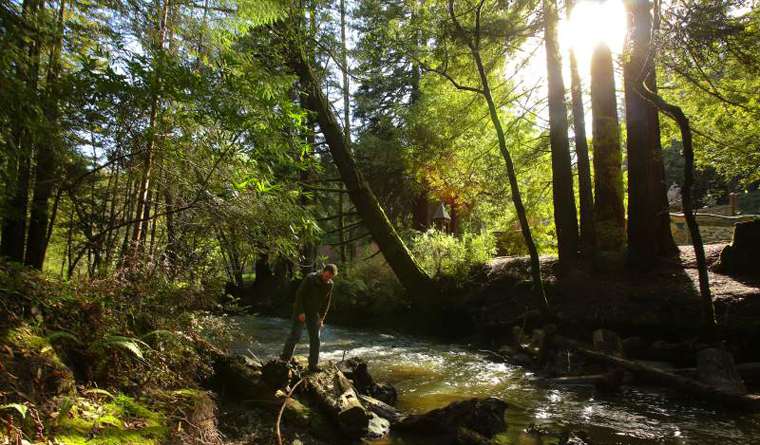
The first of the year marks the anniversary of the 2006 New Year’s flood. Having trundled myself out of bed at 5:30 that morning only to find East Napa Street filled with a foot of water running strongly southwest, I thought to myself that this was no ordinary creek overflow. Unfortunately, it may well become more ordinary.
In my six years as the city council representative on the board of the North Bay Watershed Association, I was treated to close to a dozen presentations by engineers, biologists, flood management, sanitation district supervisors and other professionals. What I learned was that almost all of the flood-management techniques employed over the past century have made the problems worse, not better.
The problem primarily stems from evaluating flooding from a cultural and economic point of view. This view imposes a criteria; that flooding of land removes it from productive agriculture and development for housing or construction. The British philosophers Thomas Hobbes (1588-1679) and John Locke (1632-1704) effectively set the stage by proposing that land not used in productive commerce was land without value. Upon these premises were later built the notions of free-market capitalism, and equating economic systems with the “Darwinian” system of the natural world, survival of the fittest. In short, flooded land was wasted land.
In nature, flood plains play a vital role in replenishing the underground water table, dispersing silt across wide stretches of land, and sustaining habitat. Creeks and rivers naturally establish what are called “alluvial fans,” places where water is deposited along with silt, forming an above-ground, spreading, fan-like structure. In many cases, the water actually disappears below ground within the fan. It is in the alluvial flood-plain fan that people like to farm and build.
The low-tech solution to flood plain management was to ditch and dike the land, and thereby hasten the drainage of water. These ditches were eventually connected to the primary water channels, such as Sonoma or Nathanson Creek. As technology advanced, ditches often became concrete culverts or buried pipes. Engineered to accommodate a best-estimated maximum flow, these systems seemed to do their appointed task, and ever more alluvial land was developed or farmed. Slowly, however, the cumulative effects of these techniques altered the structure of the remaining natural above-ground systems. The channeled water flows faster, and when it reaches a natural drainage system it scours the banks and bottom, causing incision (deepening) of the riverbed. This allows the river to accommodate more water, but at the price of increased volume and greater speed. Thus, when higher than anticipated rainfall occurs and the increased flow hits a natural obstruction (like a bend in the river or a downed tree) the higher volume and faster moving water surges over the river bank and out onto the land. Hence, the flood.
It is unlikely that we can effectively reverse the engineered solutions of the past, particularly those of last 50 years. The incised channels of the remaining natural system can only partially be restored. We will flood more often, and more dramatically. It will cause suffering, inconvenience and distress. It is the unfortunate price we pay for buying into a materialistic point of view that has devalued land and the environment in favor of the almighty dollar.